Earlier in the week, Matt W asked if there were any games that took advantage of outputting on more than one screen. Not necessarily the usage of side-by-side screens to increase the field of view, either – but different screens that perform totally different functions.
I pointed out that there was some precedent – although not a lot – and what began as a conversation quickly became a list that was worth sharing and explaining a bit.
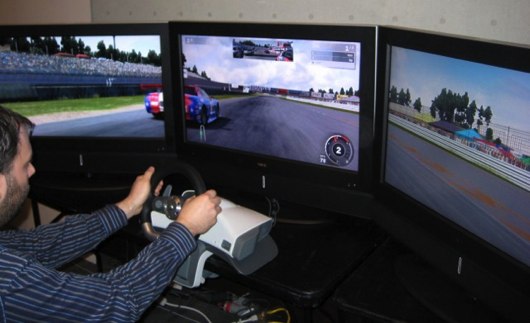
This isn’t the kind of thing Matt meant. Whilst it’s definitely a part of this conversation, the Forza Motorsport series’ use of multiple monitors to increase the field of view is the kind of thing that’s not actually very interesting. It doesn’t alter the game in any significant way. It’s also a brute force solution: each screen is rendered by its own Xbox, and all the consoles are slaved together over a local network.
I think what Matt meant was separate screens performing different functions.
At the very simplest level, second screens can act as contextual displays – parts of the HUD or interface broken out to their own display.
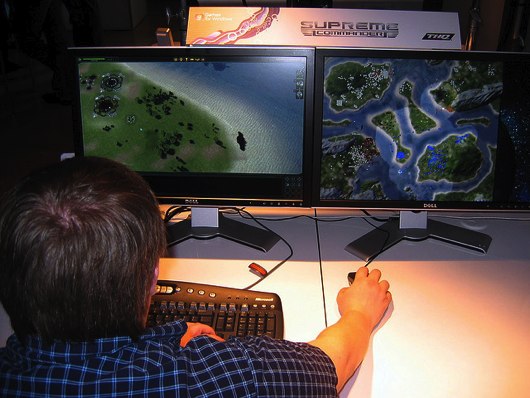
The strategy game Supreme Commander allows players to use a second monitor for a zoomed-out tactical map. Rather than reducing the map to the corner of the screen (as many strategy games do), or forcing the player to constantly zoom in and out, the second screen provides a permanent context for what’s going on the primary screen.
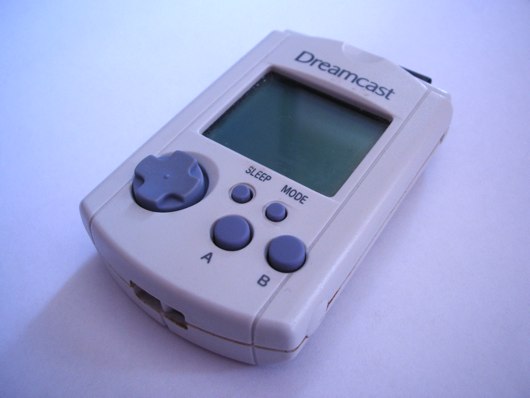
A similar type of contextual screen can be seen on the Sega Dreamcast. The VMU memory unit was designed as a miniature console itself, with a screen and set of controls. When docked with the joypad, it acted as a second screen in the player’s hands.
The VMU was not used as effectively in the role of “second screen” as it might have been, although there were exceptions. Resident Evil: Code Veronica, for instance, used the VMU to display the player character’s health (which was otherwise only visible in the status menu).
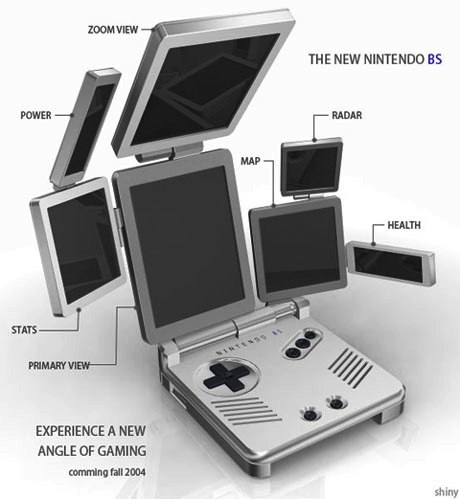
Of course, there’s a limit to how many secondary screens are sensible; shortly after the announcement of the Nintendo DS, the above spoof was widely circulated. It’s a good point: lots of little screens right next to each other aren’t very different from one big screen.
The most interesting usage of multiple screens is in their capacity to affect gameplay itself. What sort of games would you design when players can have different viewports onto the world?
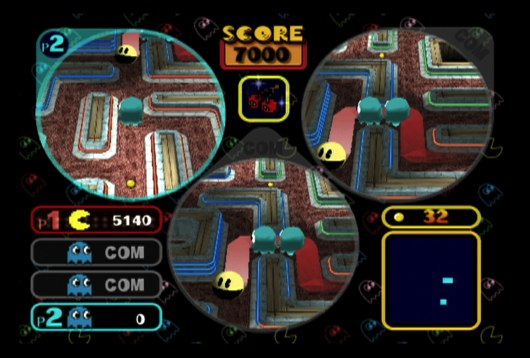
Pac-Man VS is my favourite answer to that question so far. It’s four-player Pac-Man, on the Nintendo Gamecube. Three players play ghosts: they play on the TV, with Gamecube pads.They have a 3D-ish view of a limited part of the map, and a radar in the bottom-right to know where each other is.
The fourth player is Pac-Man; they don’t use a Gamecube joypad. Instead, they play on a Gameboy Advance, plugged into the Gameube with a connection lead:
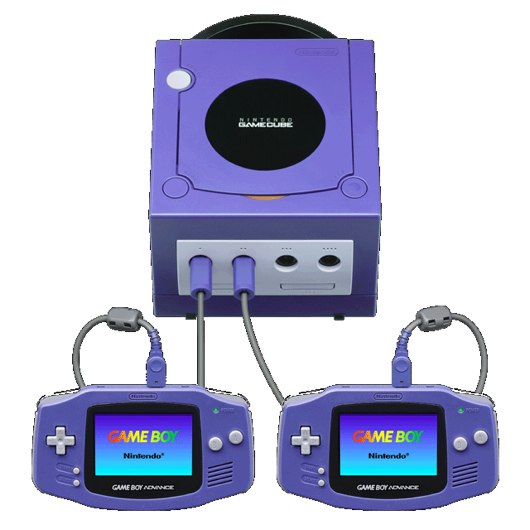
The Gameboy screen shows the Pac-Man player the entire map. Pac-man’s superpower over the ghosts is context; he has knowledge of the whole map. The ghosts are more powerful, but can’t see nearly so much.
Here’s a nice video of it all playing out, the Gameboy screen on the left, the TV on the right.
It’s marvellous: fun, social, and utterly ingenious. There were a few other games for the linkup cable designed around players having their own screens – Final Fantasy: Crystal Chronicles and Zelda: Four Swords are the obvious examples – but Pac-Man VS remains the stand-out, for me.

One recent example of this sort of approach is Scrabble on the iPad, which lets you use the pad as a board, and other iOS devices for each player to hide their tiles. But it feels so unimaginative: the secondary screens feel like they’ve been used simply because it was possible; they’re no more than direct analogues for real-world objects. (It’s also an absurdly expensive way to play Scrabble.)
Nintendo’s DS focused on the usage of a secondary screen as context and extra information – but in a parallel universe, I’m sure there’s a DS that looks much like this:
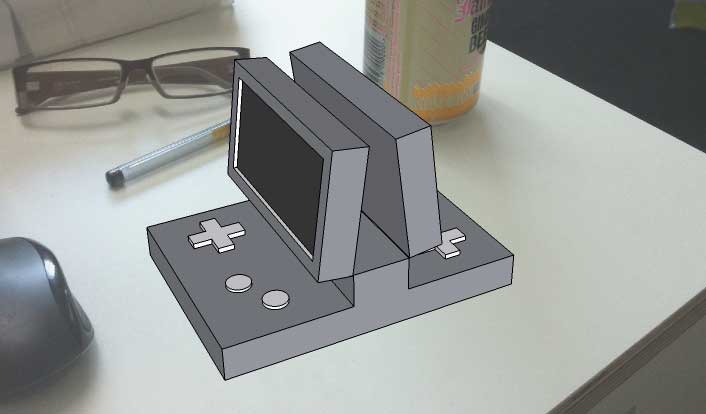
This imaginary affords all manner of games based on hidden knowledge and incomplete views of the world. And, just like a tandem, it looks wrong without someone else playing with you; it indicates how it wants to be used, inviting a second player.
My imaginary console is entirely symmetrical in its design. It’d be a shame to only encourage games that gave symmetrical abilities for both players, in the same way as games like Guess Who? or Battleships. Asymmetric games – where players have very different abilities, or viewpoints, much like Pac Man VS above – are, for me, a more interesting notion to explore with multiple screens. Imagine games where players may have not only very different abilities or tasks to one another, but also might be played on totally different types of screen from one another.
Super Mario Galaxy demonstrated a co-operative approach to asymmetric play. Rather than being another avatar in the world alongside Mario, a second player could use their Wiimote to scoop up star bits as they passed. They did nothing else, and could drop in and out when they liked; theirs was a purely additive role. It allows a player with different capabilites – or attention – to drop in and out of the game, always helping, but not being critical to Mario’s success.
To extend that idea to screens: what are the gameplay modes for a friend with a touchscreen tablet, whilst I’m playing on a console attached to the TV? Mechanic to my racing driver? Coach to my football team? Evil overlord planting traps in the dungeon I’m exploring?
I don’t know yet. This at least feels like the start of a useful catalogue of multiple-screen play. And as screens become smarter, and “screen” and “device” increasingly become synonyms for one another, the world of multiple-screen play feels like an exciting, and ripe area to explore.
4 Comments and Trackbacks
1. Wyatt said on 11 October 2010...
Some excellent points. To some degree, the limitations of a single screen have severely limited the ability of designers to craft cooperative experiences, which I personally find to be a much more interesting area than competition.
For example, rather than a mechanic, the friend with a tablet would make the ultimate navigator in a rally driving game; it’s something I’ve long wanted.
2. phuzz said on 11 October 2010...
It’s not quite the same, but I often game on one monitor, whilst using the second monitor to display a map, or sometimes, a walkthru (eg, on FarCry 2, I had a map with the diamond locations next to me).
If not that, then I’ll have a sufficiently interesting web page open to read during loading and un-skipable cutscenes
3. David Hughes said on 12 October 2010...
Interesting discussion. Another really promising asymmetrical game would involve expanding on one small feature of Modern Warfare 2. There are a couple “special ops” missions that *require* a second player, and one where player 2 is in ‘overwatch’ in a gunship.
This gives players very defined co-op roles, but also gives them very different screens to look at. The beauty of this is that a game that expands on this asymmetry would accomplish your goal while also using a genre that has massively large appeal.
4. _ROTE_ said on 13 October 2010...
Although this is nerdy at best, my suggestion is to bring back the old school Dungeons and Dragons- let the Dungeonmaster have the skills to not only have the ability to work the game as the software engineers have programmed it- but give him/her the ability to reprogram the game, in a similar fashion to Apple apps.
In cinema, several examples of narratives exist where the audience knows more than the characters on the screen.